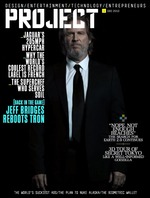We've just finished our first test of on-demand book publishing at The Bakersfield Californian with a limited test run of "Casey Christie's Kern County," a 40-page full-color book celebrating one of our longtime photographers. You can view a sampling of pages in the player above.
We're expecting a limited number of softcover copies of the book to arrive a few days before Christmas. We will sell those copies -- signed by Casey himself -- at The Californian's downtown offices for $29.99. If you're interested in a unique Christmas gift, I'd encourage you to pre-order so you can snag a copy before they're gone. You can also order a hard-cover version for $39.99 (plus S&H) but delivery before Christmas will take a miracle.
Casey is a legend around the county, so we figured his work was a good place to test self-serve, on-demand book publishing, an option that keeps upfront costs down without necessarily sacrificing quality.
Michael Fagans, The Californian's assistant photo editor, helped with the tough task of editing Casey's photos and created the book using tools from Blurb.com, just one of the self-serve online book publishers appealing to the DIY spirit.
Blurb provides templates, and walks you through the pagination process. You can choose book sizes, color or black and white, paper weights, and soft or hard covers. As with any self-serve process, creativity is limited, but the end product looks pretty good.
Prices vary accordingly, with discounts if you order in volume. Place your order and your books are printed and mailed within two weeks.
And -- this is where the on-demand printing surfaces in a big way -- Blurb will help you set up an ecommerce store to sell your book. You can choose sample pages you want to display, offer soft or hardcovers or both, and set retail prices so you can make a bit of money. Blurb even makes it easy to promote your book via Twitter, Facebook or your own blog or website. And for a fee, Blurb handles the ecommerce function, which is a nice bonus, and sends you any profit via check or PayPal.
We have yet to sell a book so it's impossible to call this a success financially. But it's been a success in terms of turning around an idea quickly and producing a quality product with little overhead. With the right products, promotion and sales outlets, it's not hard to recover staff and marketing costs and make some incremental revenue on small projects like this. In tough economies like this, we'll take it.
What companies like Blurb do is take the risk out of publishing. This is a great opportunity for newspapers, which are sitting on treasure troves of content, to repurpose those archives at low cost and little risk.
Once you get the hang of the production, books can be created quickly and printed in very small runs, or even single copies printed by direct orders from the public.
As Michael says, a great photo in the newspaper has its own merits, but that same image in a book can take on a much more tangible experience because you're likely to spend more time absorbing the details, and not just once but repeatedly.
We're already brainstorming possibilities for future Californian print book projects in addition to e-books we'll soon publish through our partners at BookBrewer. Heck, I've been asked to produce a book version of my "History of Marchbanks Speedway," (by far the most popular part of my site) so who knows what might happen with such tools at my disposal.
These are great times to be in the news business, and I'm excited about what's around the corner. Stay tuned.
 Monday, December 20, 2010 at 9:30 PM
Monday, December 20, 2010 at 9:30 PM 
